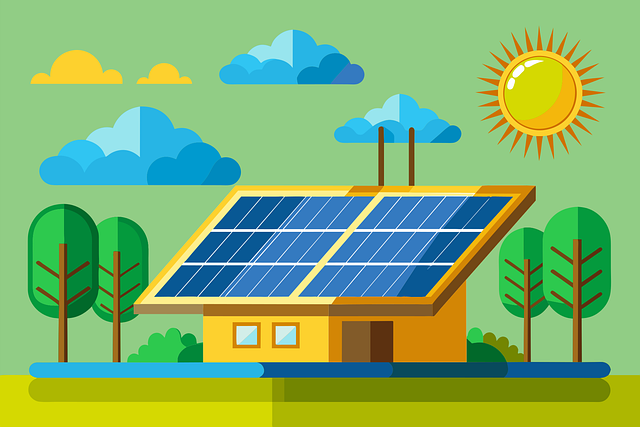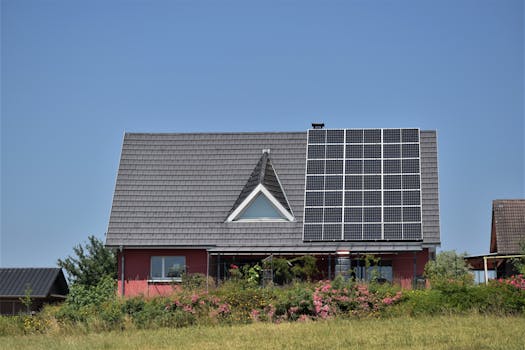“Empowering Efficiency: How New Technologies Revolutionize Solar Inverter Performance.”
The rapid advancement of new technologies has significantly transformed the performance and efficiency of solar inverters, which are crucial components in solar energy systems. As the demand for renewable energy sources grows, innovations such as smart inverters, advanced power electronics, and enhanced monitoring systems have emerged, leading to improved energy conversion, grid integration, and overall system reliability. These technological developments not only optimize the performance of solar inverters but also contribute to the broader adoption of solar energy by addressing challenges related to energy storage, demand response, and system interoperability. Consequently, the impact of new technologies on solar inverter performance is pivotal in driving the transition towards a more sustainable energy future.
Enhanced Efficiency Through Smart Inverter Technology
The advent of new technologies has significantly transformed the landscape of solar energy, particularly in the realm of solar inverters. These devices, which convert the direct current (DC) generated by solar panels into alternating current (AC) suitable for home and grid use, have seen remarkable advancements in efficiency and functionality. One of the most notable developments in this area is the emergence of smart inverter technology, which has redefined performance standards and operational capabilities.
Smart inverters are equipped with advanced features that enhance their efficiency and adaptability. Unlike traditional inverters, which operate on fixed algorithms, smart inverters utilize real-time data and sophisticated software to optimize energy conversion. This capability allows them to adjust their performance based on varying environmental conditions, such as changes in sunlight intensity or temperature fluctuations. Consequently, smart inverters can maximize energy harvest throughout the day, ensuring that solar systems operate at peak efficiency.
Moreover, the integration of communication technologies into smart inverters has facilitated improved monitoring and control. These inverters can communicate with other devices within the solar energy ecosystem, including solar panels, batteries, and even the grid itself. This interconnectedness enables real-time performance tracking and data analysis, allowing users to identify inefficiencies and make informed decisions regarding energy usage. For instance, if a smart inverter detects a drop in energy production due to shading or equipment malfunction, it can alert the system owner, prompting timely maintenance or adjustments.
In addition to enhancing efficiency, smart inverters play a crucial role in grid stability and reliability. As more renewable energy sources are integrated into the power grid, managing the variability of these resources becomes increasingly important. Smart inverters can provide grid support functions, such as voltage regulation and frequency control, which help maintain the stability of the electrical grid. By actively participating in grid management, these inverters not only improve their own performance but also contribute to the overall resilience of the energy infrastructure.
Furthermore, the implementation of smart inverter technology aligns with the growing trend of decentralized energy generation. As more homeowners and businesses invest in solar energy systems, the need for inverters that can efficiently manage distributed energy resources becomes paramount. Smart inverters facilitate this transition by enabling features such as demand response and energy storage integration. For example, they can optimize the use of stored energy during peak demand periods, reducing reliance on grid power and lowering electricity costs for consumers.
The impact of smart inverter technology extends beyond individual systems; it also influences the broader solar market. As efficiency improves and costs decrease, the adoption of solar energy becomes more attractive to a wider audience. This increased interest drives innovation and competition within the industry, further accelerating advancements in inverter technology. Consequently, manufacturers are motivated to develop even more efficient and feature-rich products, creating a positive feedback loop that benefits both consumers and the environment.
In conclusion, the evolution of solar inverter technology, particularly through the introduction of smart inverters, has significantly enhanced the efficiency and performance of solar energy systems. By leveraging real-time data, improving grid interaction, and supporting decentralized energy generation, these advanced devices are not only optimizing energy conversion but also contributing to a more sustainable energy future. As technology continues to advance, the potential for even greater improvements in solar inverter performance remains promising, paving the way for a cleaner and more efficient energy landscape.
The Role of IoT in Monitoring Solar Inverter Performance

The integration of the Internet of Things (IoT) into solar energy systems has revolutionized the way solar inverters operate and are monitored. As solar energy continues to gain traction as a sustainable power source, the performance of solar inverters becomes increasingly critical. These devices, which convert the direct current (DC) generated by solar panels into alternating current (AC) for use in homes and businesses, are essential for maximizing energy efficiency. The advent of IoT technology has introduced a new dimension to the monitoring and management of solar inverters, enhancing their performance and reliability.
One of the most significant impacts of IoT on solar inverter performance is the ability to collect and analyze real-time data. By equipping inverters with IoT sensors, operators can monitor various parameters such as voltage, current, temperature, and energy output continuously. This data is transmitted to cloud-based platforms, where advanced analytics can be applied. Consequently, operators can identify performance trends, detect anomalies, and predict potential failures before they occur. This proactive approach not only minimizes downtime but also extends the lifespan of the inverters, ultimately leading to increased energy production and cost savings.
Moreover, IoT technology facilitates remote monitoring and management of solar inverters. Traditionally, operators had to rely on manual inspections and periodic maintenance checks, which could lead to delays in addressing issues. With IoT-enabled systems, operators can access performance data from anywhere in the world, allowing for immediate responses to any irregularities. This capability is particularly beneficial for large-scale solar farms, where multiple inverters are deployed across vast areas. By streamlining the monitoring process, IoT reduces the need for on-site visits, thereby lowering operational costs and improving overall efficiency.
In addition to real-time monitoring, IoT enhances the ability to optimize inverter performance through data-driven decision-making. By analyzing historical performance data, operators can identify patterns and correlations that inform operational strategies. For instance, they can adjust inverter settings based on weather conditions, such as cloud cover or temperature fluctuations, to maximize energy output. Furthermore, machine learning algorithms can be employed to predict energy production based on historical data, enabling better grid management and energy distribution.
The integration of IoT also supports enhanced communication between solar inverters and other components of the energy ecosystem. For example, in a smart grid environment, solar inverters can communicate with energy storage systems and demand response programs. This interconnectedness allows for more efficient energy management, as inverters can adjust their output based on real-time demand and supply conditions. As a result, the overall stability and reliability of the energy grid are improved, making renewable energy sources more viable.
However, the implementation of IoT in solar inverter monitoring is not without challenges. Security concerns regarding data privacy and the potential for cyberattacks must be addressed to ensure the integrity of the systems. Additionally, the need for robust infrastructure to support IoT connectivity is essential for maximizing the benefits of this technology. Despite these challenges, the advantages of IoT in enhancing solar inverter performance are undeniable.
In conclusion, the role of IoT in monitoring solar inverter performance is transformative, offering unprecedented opportunities for optimization, efficiency, and reliability. As the solar energy sector continues to evolve, the integration of IoT technology will play a pivotal role in shaping the future of renewable energy, ensuring that solar inverters operate at peak performance while contributing to a more sustainable energy landscape.
Impact of Machine Learning on Predictive Maintenance for Solar Inverters
The integration of machine learning into the realm of solar inverter technology has ushered in a new era of predictive maintenance, significantly enhancing the performance and reliability of solar energy systems. As solar inverters play a crucial role in converting the direct current generated by solar panels into alternating current for use in homes and businesses, their efficiency and uptime are paramount. Traditional maintenance practices often relied on scheduled inspections and reactive measures, which could lead to unexpected downtimes and costly repairs. However, the advent of machine learning has transformed this approach, allowing for a more proactive and data-driven strategy.
Machine learning algorithms analyze vast amounts of operational data collected from solar inverters, identifying patterns and anomalies that may indicate potential failures. By leveraging historical performance data, these algorithms can predict when an inverter is likely to experience issues, enabling maintenance teams to address problems before they escalate. This shift from reactive to predictive maintenance not only minimizes downtime but also optimizes the overall performance of solar energy systems. As a result, operators can ensure that their systems are running at peak efficiency, ultimately leading to increased energy production and reduced operational costs.
Moreover, the implementation of machine learning in predictive maintenance allows for a more tailored approach to each solar inverter’s unique operating conditions. Factors such as environmental conditions, usage patterns, and specific inverter models can all influence performance. Machine learning models can be trained to account for these variables, providing insights that are specific to each installation. This level of customization enhances the accuracy of predictions, allowing maintenance teams to prioritize interventions based on the likelihood of failure and the potential impact on energy production.
In addition to improving maintenance schedules, machine learning can also facilitate the development of more advanced diagnostic tools. By continuously monitoring inverter performance and comparing it against established benchmarks, these tools can provide real-time feedback on system health. This capability not only empowers operators to make informed decisions about maintenance but also enhances their understanding of how various factors affect inverter performance. Consequently, operators can implement strategies to mitigate risks and improve the longevity of their solar inverters.
Furthermore, the data-driven insights generated by machine learning can lead to innovations in inverter design and functionality. As manufacturers gain a deeper understanding of failure modes and performance limitations through predictive analytics, they can refine their products to enhance reliability and efficiency. This iterative process fosters a cycle of continuous improvement, where advancements in technology lead to better-performing inverters, which in turn generate more data for further analysis.
The impact of machine learning on predictive maintenance for solar inverters extends beyond operational efficiency; it also contributes to the broader goals of sustainability and energy resilience. By maximizing the uptime and performance of solar energy systems, machine learning helps to ensure that renewable energy sources can meet growing energy demands. As the world increasingly shifts towards sustainable energy solutions, the role of advanced technologies like machine learning will be pivotal in optimizing the performance of solar inverters and, by extension, the entire solar energy ecosystem.
In conclusion, the integration of machine learning into predictive maintenance practices for solar inverters represents a significant advancement in the field of renewable energy. By enabling proactive maintenance, enhancing diagnostic capabilities, and driving innovation in inverter design, machine learning not only improves the reliability and efficiency of solar energy systems but also supports the transition towards a more sustainable energy future. As this technology continues to evolve, its impact on solar inverter performance will undoubtedly grow, paving the way for a more resilient and efficient energy landscape.
Integration of Energy Storage Systems with Advanced Inverter Solutions
The integration of energy storage systems with advanced inverter solutions represents a significant evolution in the solar energy landscape, fundamentally enhancing the performance and efficiency of solar power systems. As the demand for renewable energy sources continues to rise, the need for reliable and efficient energy management becomes increasingly critical. Advanced inverters, which serve as the backbone of solar energy systems, are now being designed to work seamlessly with energy storage technologies, creating a more resilient and flexible energy infrastructure.
One of the primary benefits of integrating energy storage systems with advanced inverters is the ability to optimize energy usage. Traditional solar inverters primarily convert direct current (DC) generated by solar panels into alternating current (AC) for use in homes and businesses. However, with the advent of energy storage solutions, such as batteries, these advanced inverters can now manage the flow of electricity more effectively. By storing excess energy generated during peak sunlight hours, these systems can provide power during periods of low generation or high demand, thereby enhancing energy reliability and reducing dependence on the grid.
Moreover, the integration of energy storage with advanced inverter technology allows for improved grid stability. As more renewable energy sources are added to the grid, fluctuations in power generation can lead to instability. Advanced inverters equipped with energy storage capabilities can respond to these fluctuations in real-time, providing ancillary services such as frequency regulation and voltage support. This not only helps maintain grid stability but also facilitates the integration of a higher percentage of renewable energy into the overall energy mix, promoting a more sustainable energy future.
In addition to enhancing grid stability, the combination of energy storage systems and advanced inverters can lead to significant cost savings for consumers. By enabling users to store energy when it is most affordable—typically during the day when solar generation is at its peak—these systems allow for the consumption of stored energy during peak pricing periods. This shift in energy usage patterns can lead to lower electricity bills and a more efficient use of resources. Furthermore, as technology continues to advance, the costs associated with both energy storage and inverter systems are expected to decline, making these solutions increasingly accessible to a broader range of consumers.
Transitioning to a more decentralized energy model is another critical aspect of this integration. Advanced inverters equipped with energy storage capabilities facilitate the development of microgrids, which can operate independently or in conjunction with the main grid. This decentralization not only enhances energy security but also empowers communities to take control of their energy resources. By harnessing local solar generation and storage, communities can reduce their carbon footprint and increase their resilience to power outages and other disruptions.
As we look to the future, the synergy between energy storage systems and advanced inverter solutions will likely play a pivotal role in shaping the solar energy landscape. Innovations in inverter technology, such as smart inverters with enhanced communication capabilities, will further improve the efficiency and reliability of solar power systems. These advancements will enable better monitoring and management of energy resources, ensuring that consumers can maximize their investment in solar energy.
In conclusion, the integration of energy storage systems with advanced inverter solutions is transforming the way we harness and utilize solar energy. By optimizing energy usage, enhancing grid stability, reducing costs, and promoting decentralization, this integration is paving the way for a more sustainable and resilient energy future. As technology continues to evolve, the potential for these systems to revolutionize the solar energy sector remains immense, promising a cleaner and more efficient energy landscape for generations to come.
Q&A
1. **Question:** How do advanced algorithms improve solar inverter efficiency?
**Answer:** Advanced algorithms optimize the energy conversion process by dynamically adjusting the inverter’s operation to match varying solar conditions, resulting in higher overall efficiency.
2. **Question:** What role does machine learning play in solar inverter performance?
**Answer:** Machine learning enables predictive maintenance and real-time performance monitoring, allowing for quicker identification of issues and optimization of energy output.
3. **Question:** How do smart grid technologies affect solar inverter functionality?
**Answer:** Smart grid technologies enhance solar inverter functionality by enabling better communication between the inverter and the grid, facilitating demand response, and improving energy management.
4. **Question:** In what way do new materials impact solar inverter durability?
**Answer:** New materials, such as advanced semiconductors and protective coatings, increase the durability and thermal performance of solar inverters, leading to longer lifespans and reduced maintenance needs.
Conclusion
The impact of new technologies on solar inverter performance has been significant, leading to enhanced efficiency, reliability, and integration capabilities. Innovations such as advanced power electronics, machine learning algorithms, and improved materials have resulted in inverters that can better manage energy conversion, optimize energy output, and adapt to varying environmental conditions. Additionally, the integration of smart grid technologies and IoT connectivity has enabled real-time monitoring and predictive maintenance, further improving performance and lifespan. Overall, these advancements contribute to the increased adoption of solar energy, making it a more viable and sustainable option for energy generation.




